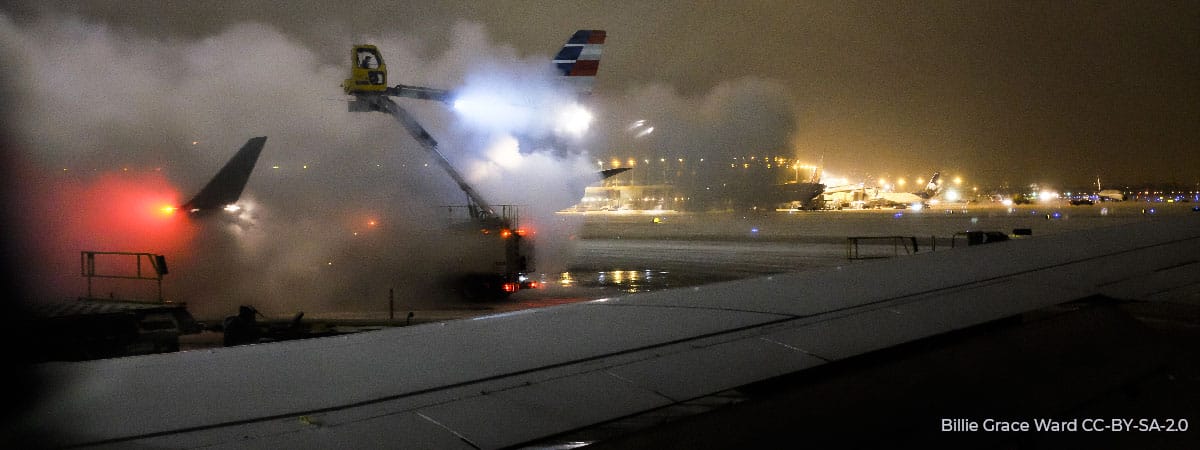When we see an aeroplane flying through the sky, we rarely stop to think about the complex chemical harmonies that keep it aloft. Aviation is a dance between human creativity and science. Chemistry lies at the heart of this aerial achievement, working behind the scenes to keep everything in perfect balance.
From the formulation of fuels to the composition of materials and passenger safety, chemistry is the foundation of the knowledge that allows us to fly through the air. It is also one of the disciplines currently propelling the aviation industry to new heights.
Air transport would be unthinkable without chemistry. From materials and safety measures to fuels and gases, chemistry makes aviation possible.
Let’s take a look at some examples of how we interact with chemistry when we fly:
Fuels, the energy for flight
Kerosene is the main energy source powering today’s aircraft. Each time an aeroplane takes off, this mixture of hydrocarbons provides the energy that fuels its jet engines. A commercial aircraft consumes close to 76 litres of kerosene during a 100-km flight. Looking forward, chemistry has a fundamental role to play in optimising how this fuel is formulated and improving its efficiency. It is vitally important to explore ways to adjust the composition of this energy source and maximise its performance.
Aviation biofuels, a path to a more sustainable future
Sustainable flight is visible on the horizon thanks to the aviation industry’s collective commitment to achieving net zero emissions by 2050. Aviation biofuels are being created through chemical processes that extract energy from renewable sources, such as vegetable oils and animal fats. Some flights have already used mixtures of biofuels and conventional kerosene, reducing their carbon footprint and paving the road to a greener future.
Chemistry is the cornerstone of the development of Sustainable Aviation Fuels (SAF), a term that encompasses different types of fuels that aim to reduce aviation’s impact on the atmosphere. These fuels must comply with certain social, economic and environmental criteria to be considered SAF. SAF are made from biomass refined through a process called hydrodeoxygenation, which eliminates the oxygen, sulphur and nitrogen present in these renewable raw materials. SAF can reduce CO2 emissions by 80% compared to fossil fuels.
SAF obtained from biomass and advanced biofuels made from waste are both included on the European Renewable Energy Directive’s list of sustainable fuels. Chemistry is hard at work there as well.
Green hydrogen, a clean energy
Green hydrogen is chemical element at the cutting edge of innovation with the potential to revolutionise aviation. It is produced through electrolysis using renewable energy sources and can be utilised as a clean fuel for aeroplanes. This exciting advance in chemistry opens the door to flights free from carbon emissions and suggests a possible – though still uncertain – way forward.
New materials: lightweight and resistant
The structure of an aircraft has to strike a balance between strength and weight. This is where carbon fibre reinforced polymers, and therefore chemistry, come into play. These composite materials are exceptionally lightweight and strong. This combination allows aeroplanes to fly more efficiently, which has a direct impact on lowering fuel consumption and reducing emissions, while also ensuring passenger safety.
Flame retardants and their protective role in fire safety
Safety is a top priority in the aviation industry, and chemistry has a key role to play. Flame retardants are chemical compounds applied to the materials inside an aircraft. These compounds prevent fire from spreading rapidly, thus protecting passengers in the event of a fire. The chemistry behind these flame retardants is silently guaranteeing everyone’s safety while in the air.
Interior materials and air filtration
The passenger experience is also influenced by chemistry. All the materials inside an aircraft, from the overhead bins to the seats and the flooring, are carefully selected for comfort and safety. Chemistry is also behind the air filtration systems inside the cabin, guaranteeing a healthy and contaminant-free environment during flight.
Chemistry’s personal touch on flights
Chemistry plays a pivotal role in many surprising aspects of a flight that often go unnoticed. It is present in the preservatives found in the food we eat on board, the drinks, the hot towels given out before take-off, the hand dryers in the lavatories, the fire extinguishers, and the air we would breathe if we ever needed an oxygen mask. Chemistry is in every corner of an aircraft.
Continuing with some more obvious examples of where chemistry is used on aeroplanes, we can find it in the plastic of the fuselage, the carpet beneath our feet, the seat coverings, and the glass and metals that make up the seatback screens on the aeroplane. The next time you’re on a plane, compare the screen of your phone or laptop with the screens on the aircraft. They’re not quite the same, are they?
Indeed, chemistry is a science that is intrinsically woven into our daily lives, from the food we enjoy and the objects we use to more complex systems like combustion vehicles and, as we have seen, the aeroplanes we love watching fly into the sunset on an autumn afternoon. Each time we are on a plane, we are submerged in a world where chemistry lies beneath the surface of every component and every experience. From the fuels that make them fly to the materials that compose them and the precautions that keep passengers safe, chemistry is a vital force behind aviation.
As we advance toward a future where flights are more sustainable and efficient, chemistry continues to carry our hopes and dreams above the clouds, allowing us to safely and confidently explore the skies.



